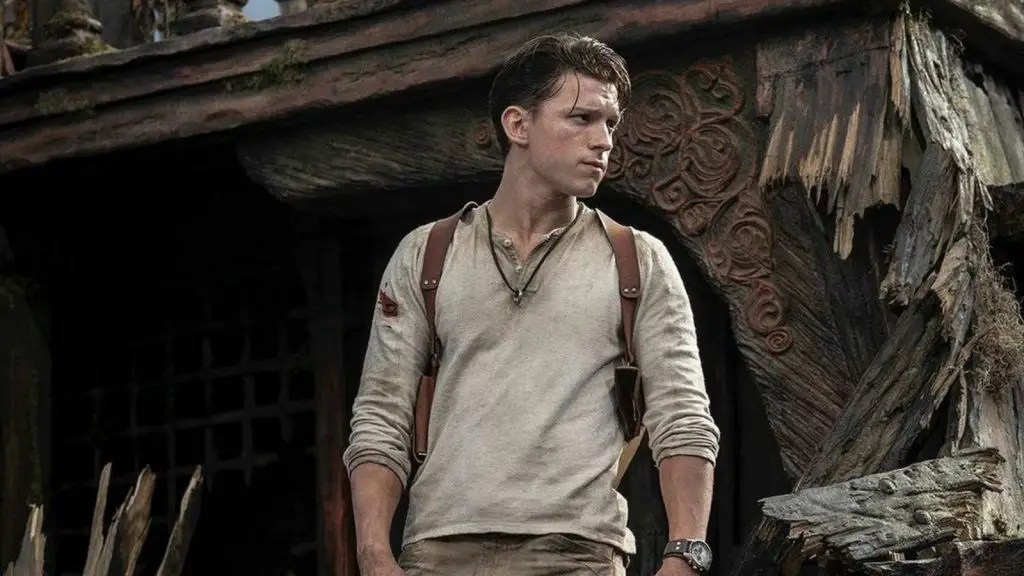“A Spell to Ward off the Darkness,” the first feature-length collaboration between filmmakers Ben Rivers and Ben Russell, is a three movement symphonic film poem, meditating on the relationship of the individual to the community. Part One, set in an “intentional community” or commune in rural Estonia, is an oblique portrait of a group of mostly young Europeans and Americans who are practicing their utopian ideal of collective living. In the film’s middle section, one member of the group (Robert Aiki Aubrey Lowe) is shown living alone in the wilderness (filmed in Finland). The final section shows Lowe returned, and performing ferocious metal music with his band in a club in Oslo.
The commune sequences take place in pleasant summer weather, but with frequent rain. We see fragmentary sequences of commune members engaged in collaborative projects such as cooking a large meal, or building a geodesic dome. We see them enjoying a group sauna, playing music together, and simply hanging out and taking care of their kids. Like most utopians, there is a fair amount of discussion about the theory of communal living, which we hear in several snippets of conversation. Some of the ideas discussed are extraordinarily fuzzy and vacuous, while others seem practical and insightful, showing that the percentage of clear thinkers among utopians is no higher than it is among the general population.
For me, the chief significance of this section is that it clearly documents a form of hippie counterculture which is still alive and thriving in many parts of the USA and Europe, a contemporary culture very seldom depicted in films or television. Notwithstanding the popular idea that this culture fizzled out of its own accord in the mid 1970s, I personally have encountered many such communities throughout my life, right up to the present. The community depicted here does not consist of elderly baby boomers, and the commune members have laptops and cell phones, although, like hippies everywhere, they are much more drawn to things which are hand-made and low tech. Hippies like to network but they generally dislike media exposure and celebrity, so we may not hear about them too often, but it is good to be reminded that this culture has been evolving and developing continuously since it first appeared in the 1960s.
After the intense social focus of the first section it is a pleasure to follow Lowe as he wanders through the stunningly beautiful Finnish wilderness in the film’s center section. Russell and Rivers have a wonderful ability to convey the depth, intensity, and visual beauty of natural places with their flair for arresting shots and sound textures. Lowe is the one commune member who never spoke, but was seen listening and reading, and here his solitary life in the woods is also contemplative. At the end of this section he stands alone, watching a wooden house consumed by flames in the middle of the night in the woods. Whose house is it? Did he set the fire, deliberately or accidentally, or did he just happen across it? The film doesn’t tell us, but the method of the film is more poetic than narrative, evoking a series of related meanings through a collage of images. Somehow, the poet’s time alone in woods has resulted in a major and magical transformation of his relationship to society, and the fire seems to evoke the power of this transformation.
At this point, the film has presented a simple thesis (community) and its antithesis (solitude). In the film’s final section, these ideas receive a startling synthesis. Lowe puts on mud-like makeup, and together with his bandmates, is seen performing a music of relentless driving rhythms and vocals which consists only of tuneless howling. The content of the music is certainly wild and passionate, but its form is meticulous and precise. The band members have airtight rhythmic coordination, and the intricate compositions are structured into easily identifiable, square phrases. The music miraculously synthesizes a wild and solitary energy with a patterned and communal form. The poet has taken the wildness he found alone in the woods and returned with a gift of fire for the community, and the Oslo audience nods along in ecstasy. (Part of me, however, grew annoyed with the sense of self-congratulation which hovered over the manufactured “authenticity” of the music, which consisted of a lengthy elaboration of a single musical idea. I wished they could have broken into a Cole Porter ditty, even for a second, to indicate they had some ironic perspective on what they were doing.)
The film begins with a prelude sequence of darkness falling on a remote lake (shot from the lake’s center). In the film’s coda, Lowe leaves the stage and walks alone to the urban waterfront, an image that beautifully synthesizes his solitary awareness within the community around him. The transformative fire of his powerful music is galvanizing, and the film contains multiple, resonant images of the way that humans gather together around fires, fusing together our wild and our social natures.


